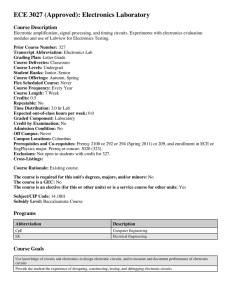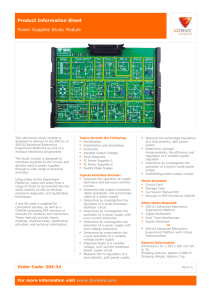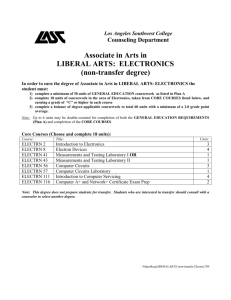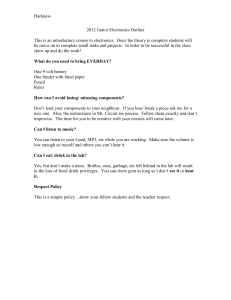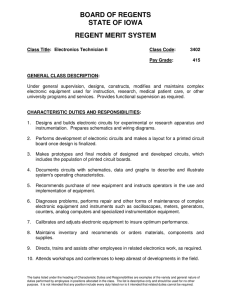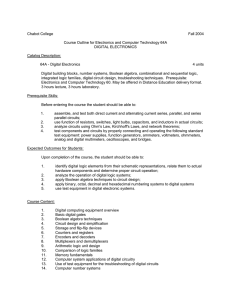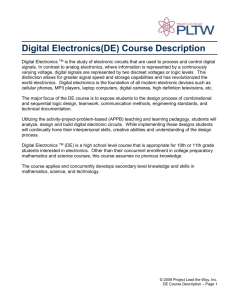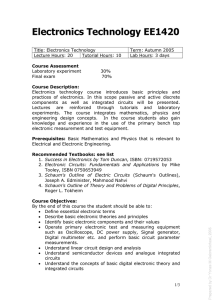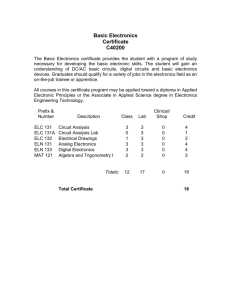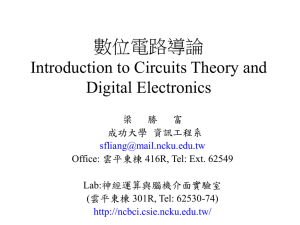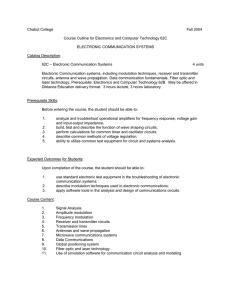COURSE DESCRIPTION
advertisement
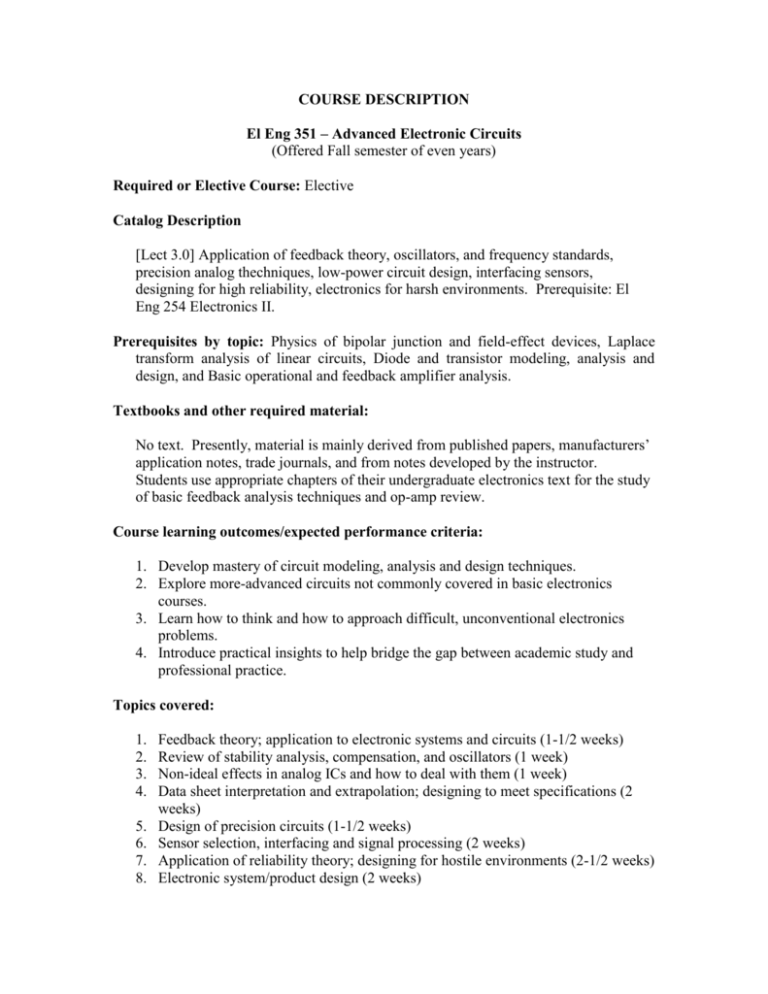
COURSE DESCRIPTION El Eng 351 – Advanced Electronic Circuits (Offered Fall semester of even years) Required or Elective Course: Elective Catalog Description [Lect 3.0] Application of feedback theory, oscillators, and frequency standards, precision analog thechniques, low-power circuit design, interfacing sensors, designing for high reliability, electronics for harsh environments. Prerequisite: El Eng 254 Electronics II. Prerequisites by topic: Physics of bipolar junction and field-effect devices, Laplace transform analysis of linear circuits, Diode and transistor modeling, analysis and design, and Basic operational and feedback amplifier analysis. Textbooks and other required material: No text. Presently, material is mainly derived from published papers, manufacturers’ application notes, trade journals, and from notes developed by the instructor. Students use appropriate chapters of their undergraduate electronics text for the study of basic feedback analysis techniques and op-amp review. Course learning outcomes/expected performance criteria: 1. Develop mastery of circuit modeling, analysis and design techniques. 2. Explore more-advanced circuits not commonly covered in basic electronics courses. 3. Learn how to think and how to approach difficult, unconventional electronics problems. 4. Introduce practical insights to help bridge the gap between academic study and professional practice. Topics covered: 1. 2. 3. 4. 5. 6. 7. 8. Feedback theory; application to electronic systems and circuits (1-1/2 weeks) Review of stability analysis, compensation, and oscillators (1 week) Non-ideal effects in analog ICs and how to deal with them (1 week) Data sheet interpretation and extrapolation; designing to meet specifications (2 weeks) Design of precision circuits (1-1/2 weeks) Sensor selection, interfacing and signal processing (2 weeks) Application of reliability theory; designing for hostile environments (2-1/2 weeks) Electronic system/product design (2 weeks) 9. Advanced topics of interest to the class (1 week) 10. Design project discussion (1/2 week) 11. Exam (1/2 week) Class/laboratory schedule: Three 50-minute or two 75-minute lectures/week are typical. Students also may be taken to the laboratory occasionally to observe a circuit demonstration. Contribution of course to meeting the professional component: Students learn how to accurately interpret and apply electronic component data Students learn how electronic system designs are planned and carried out Students learn to apply engineering analysis tools in solving unusual problems Students gain experience in thinking beyond the confines of academic problems Relationship of course learning outcomes to ECE program outcomes: ECE Outcome a b c d e f g h i j k l Course Outcomes 1 2 3 4 S S M W M S S Comments Application of concepts in mathematics and physics S S S M Key laws and relationships for electronic devices M M S S Fundamental topics and concepts in electronics W S M S S – strong connection; M – medium connection; W – weak connection Prepared by: Norman R. Cox/Steve Watkins Date: June 16, 2008.
